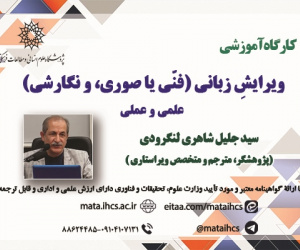ارائه مدل مفهومی همگرایی فناوری های نوظهور در زیست بوم رایانش شناختی به منظور ارتقای امنیت سایبری
آرشیو
چکیده
امروزه افزایش پیچیدگی و فراوانی تهدیدات نوین سایبری، حفاظت از زیرساخت های حیاتی و داده های حساس را به چالشی حیاتی در عصر دیجیتال تبدیل کرده است. در این میان، همگرایی فناوری های نوظهور به عنوان راهکاری نوین برای بازتعریف پارادایم های امنیت سایبری مطرح می شود. این پژوهش با تمرکز بر پتانسیل های ترکیبی این فناوری ها، به بررسی امکان تبدیل رایانش شناختی از یک مفهوم نظری به ابزاری عملیاتی در مقابله با تهدیدات پیشرفته می پردازد. این مطالعه با بهره گیری از روش فراترکیب و پیروی از چارچوب هفت مرحله ای سندلوسکی و باروسو، به تحلیل نظام مند در حوزه های رایانش ابری، رایانش کوانتومی و رایانش شناختی پرداخته است. بر این اساس، یک مدل مفهومی سه لایه توسعه یافته که لایه زیرساخت شامل تلفیق منابع ابری و رایانش کوانتومی، لایه شناختی شامل الگوریتم های خودآموز و تحلیل شناختی و لایه کاربرد شامل بهینه سازی تصمیم سازی امنیتی است. همگرایی این فناوری ها موجب کاهش زمان تشخیص ناهنجاری ها، افزایش دقت پیش بینی حملات و بهینه سازی مصرف منابع رایانشی می شود. همچنین، ادغام پردازش کوانتومی در لایه زیرساخت، امکان حل مسائل غیرخطی امنیتی را در مقیاس در پی دارد. یافته ها مؤید آن است که زیست بوم پیشنهادی نه تنها آگاهی وضعیتی امنیت سایبری را ارتقا می دهد، بلکه از طریق یادگیری تقویتی و توزیع هوشمند منابع، قابلیت پاسخگویی به تهدیدات ناشناخته را نیز فراهم می کند. این پژوهش گامی اساسی در جهت تبدیل رایانش شناختی به یک سامانه خودگردانِ مقیاس پذیر است که می تواند به عنوان راهکاری پیشگیرانه در معماری امنیت سایبری ملی به کار گرفته شود.A Conceptual Model for the Convergence of Emerging Technologies in the Cognitive Computing Ecosystem to Enhance Cybersecurity
The increasing complexity and prevalence of modern cyber threats have transformed the protection of critical infrastructures and sensitive data into a vital challenge in the digital age. In this context, the convergence of emerging technologies has been proposed as an innovative approach to redefine cybersecurity paradigms. This research, focusing on the combined potential of these technologies, explores the feasibility of transforming cognitive computing from a theoretical concept into an operational tool for countering advanced threats. Utilizing the meta-synthesis method and following the seven-step framework of Sandelowski and Barroso, this study systematically analyzes the domains of cloud computing, quantum computing, and cognitive computing. Accordingly, a three-layer conceptual model has been developed: the infrastructure layer integrating cloud resources and quantum computing, the cognitive layer encompassing self-learning algorithms and cognitive analysis, and the application layer optimizing security decision-making. The convergence of these technologies results in reduced anomaly detection time, improved attack prediction accuracy, and optimized computational resource consumption. Furthermore, the integration of quantum processing in the infrastructure layer enables the resolution of complex nonlinear security problems at scale. The findings confirm that the proposed ecosystem not only enhances cybersecurity situational awareness but also, through reinforcement learning and intelligent resource distribution, provides the capability to respond to unknown threats. This research marks a significant step towards transforming cognitive computing into a scalable autonomous system that can serve as a preventive solution in national cybersecurity architecture.



